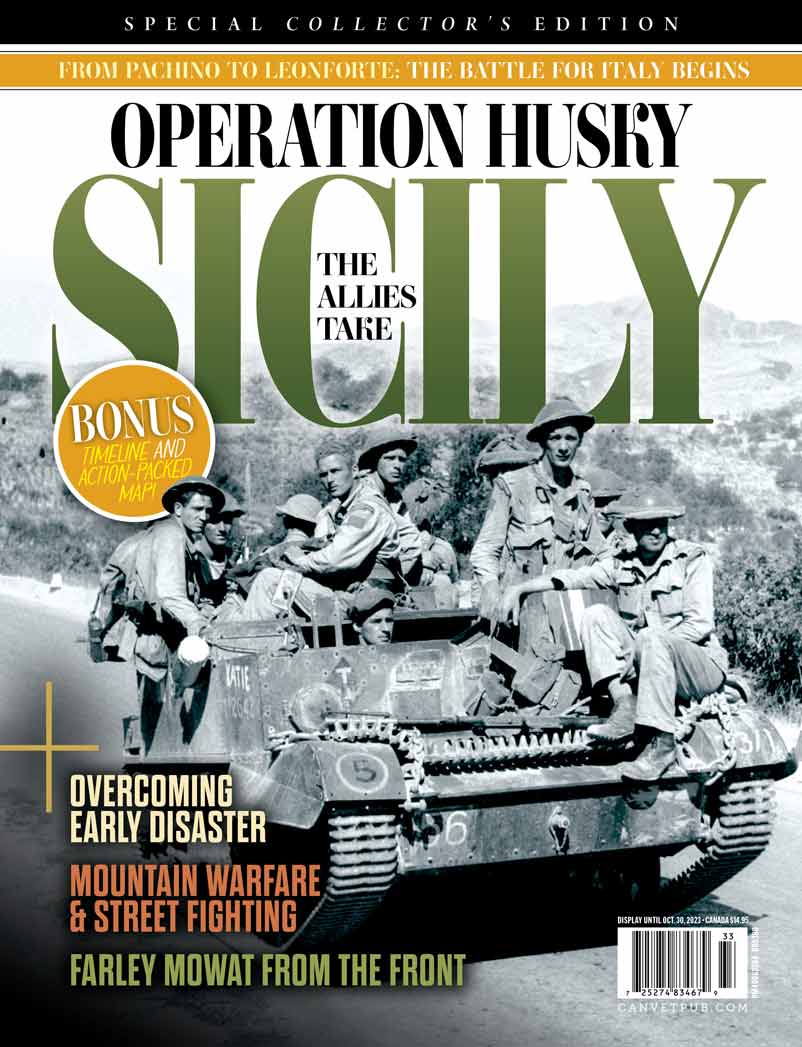
For almost four years, the forces of Nazi Germany have occupied Europe while the Allies fought in Africa and the Pacific. Now, on July 10, 1943, Canadian, British and American forces invade Sicily, a hot, mountainous, enemy-occupied island off Italy’s south coast. The Allied liberation of the continent has begun.
Assault convoys loaded with men and equipment are already at sea when senior officers engage in a daily battle-planning ritual, randomly drawing three ships’ names from a hat. Each draw represents vessels lost to enemy torpedoes, the scenarios posing various challenges the commanders might have to overcome. As it turns out, the worst-case scenario becomes bloody reality.
In early-1943, there is no expectation the 200,000-strong First Canadian Army will join in a Mediterranean campaign. It’s training in Britain for the expected cross-channel invasion of Europe. But the public and key military leaders want Canadian troops in the fight, and Prime Minister Mackenzie King agrees.
As 181,000 Allied troops prepare to sail for Sicily, 200,000 under-equipped Italian troops supported by 32,000 Germans comprise a suspect force. Beach defences are patchy and, inland, defensive measures are weak. The Axis command structure is chaotic. The Allies engineer an ingenious ruse to keep it that way. For all intents and purposes, it works.
Allied troops gain a firm toehold on every beach within a day of landing, though British and American airborne operations prove disastrous inland. Small units of paratroopers save the day, preventing German reinforcements from reaching the American beaches. The invasion achieves stunning surprise, and the Canadians are in the vanguard.
At British General Bernard Montgomery’s insistence, the Canadians “drive hard” in the heat of a Mediterranean summer. Their means of transport largely lost at sea, they march, vital supplies borne by small carts hauled by donkeys and mules purloined from local farms. They fight malaria, dysentery and exhaustion as they enter the rugged mountains and enemy resistance intensifies.
Supported by artillery fire, Canadian troops mount a tortuous advance on the hilltop town of Agira. German mortars pound reserve companies and deadly accurate fire rains down on the main formation. The advance stalls in difficult terrain. But after three days of hard fighting, the Canadians enter Agira.
The fighting winds down; almost 40,000 Wehrmacht troops retreat across the strait. Canadian casualties total 2,310, including 562 killed, but they had advanced 200 kilometres, more than any other division in the British Eighth Army of which they are a part. Before it’s over, on July 26, Allied High Command decides to continue on to the Italian mainland.